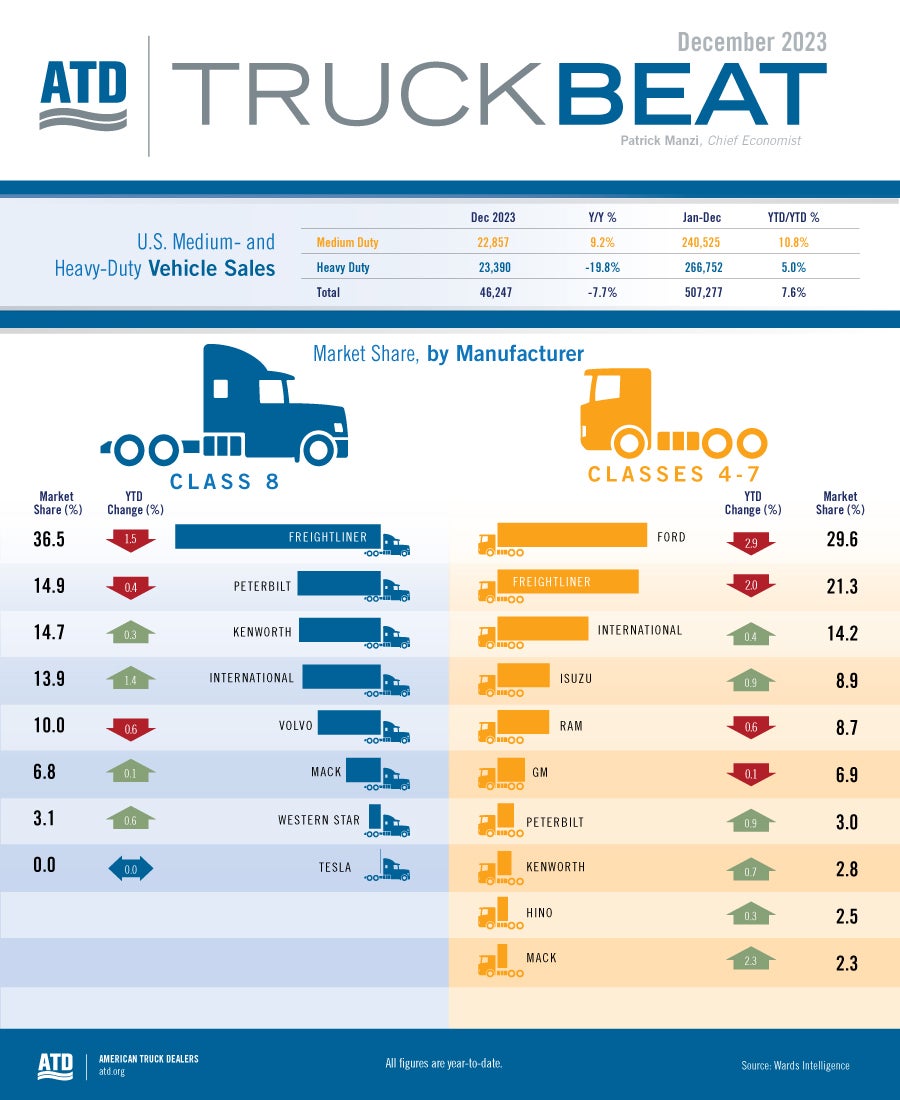Nada Commercial Truck Values Free: Navigating the Landscape of Commercial Vehicle Valuation typestruckssale.com
In the dynamic world of commercial trucking, understanding the true value of an asset is paramount. Whether you’re a fleet manager looking to upgrade, an owner-operator considering a sale, a lender assessing collateral, or an insurer setting policy, accurate valuation is the bedrock of sound financial decisions. For decades, the National Automobile Dealers Association (NADA), through its NADAguides platform, has been the gold standard for vehicle valuation, including a comprehensive system for commercial trucks.
The phrase "Nada Commercial Truck Values Free" immediately sparks interest, suggesting readily available, no-cost access to this authoritative data. However, the reality is a bit more nuanced. While direct, unrestricted access to NADA’s detailed commercial truck valuation database typically comes with a subscription cost for professionals, there are indeed various avenues to access NADA-derived information or obtain reliable, free estimates that leverage similar market intelligence. This comprehensive guide will demystify NADA commercial truck values, explore how "free" access can be achieved, and provide actionable insights for anyone navigating the commercial vehicle market.
Understanding NADAguides for Commercial Trucks: The Industry Benchmark
NADAguides, specifically its commercial truck valuation division, is an indispensable tool for anyone dealing with heavy-duty vehicles. It provides standardized, data-driven valuations that reflect current market conditions, depreciation trends, and the impact of various features and conditions. Unlike consumer car valuations, commercial truck valuations are significantly more complex due to the vast array of configurations, specialized equipment, and extreme variations in usage and wear.
Why is NADA the Industry Standard?
NADA’s authority stems from its rigorous methodology, which includes:
- Vast Data Collection: Aggregating transactional data from dealers, auctions, and various market sources across the country.
- Expert Analysis: A team of analysts continually monitors market trends, economic indicators, and industry-specific factors.
- Comprehensive Coverage: Valuing a wide range of commercial truck types, from light-duty commercial vehicles to heavy-duty tractors, vocational trucks, and trailers.
- Detailed Adjustments: Accounting for mileage, condition, optional equipment, regional differences, and even specific engine or transmission types.
For professionals, NADAguides provides detailed reports that include wholesale, retail, and loan values, along as specific adjustments for hundreds of options and conditions. This level of detail is crucial for precise financial planning and transaction execution.
The "Free" Misconception vs. Reality: Where to Find Value
The core clarification needed for "Nada Commercial Truck Values Free" is this: direct, unrestricted access to the full NADA commercial truck valuation database typically requires a paid subscription, often costing hundreds or thousands of dollars annually for professionals. This cost reflects the extensive data collection, analysis, and infrastructure required to maintain such an authoritative resource.
However, the good news is that you don’t always need a direct subscription to benefit from NADA’s influence or to obtain valuable estimates. Many entities that do subscribe to NADAguides often share derived information or offer free valuations based on similar methodologies. The "free" aspect often refers to leveraging these indirect avenues or utilizing tools that, while not directly NADA, provide reliable estimates informed by similar market dynamics.
How to Get (or Infer) "Free" NADA Commercial Truck Values and Reliable Estimates
While you might not get a direct, unlimited login to NADA’s commercial truck database for free, here are several practical ways to obtain valuable insights and "free" estimates:
Leverage Dealerships, Lenders, and Insurers:
- Trade-in Valuations: When considering trading in your commercial truck at a dealership, they will invariably use NADAguides (or a similar professional tool like Truck Blue Book) to assess its value. They often share this valuation with you as part of the trade-in offer.
- Loan Applications: Banks and credit unions use NADA values to determine the collateral value of a commercial truck for financing. When you apply for a loan, the lender’s assessment will be heavily influenced by NADA data, and they may share their valuation with you.
- Insurance Quotes/Claims: Insurance companies use NADA values to determine premiums and calculate payouts in the event of a total loss. Requesting a quote or filing a claim can provide insight into their NADA-based valuation.
- Benefit: Direct access to a NADA-derived number specific to your transaction.
- Limitation: You get the value for a specific purpose (trade, loan, insurance), not ongoing access.
-
Utilize Online Free Valuation Tools (with Caveats):
- Many commercial truck listing websites and some financial platforms offer free online valuation tools. While these may not be directly powered by NADA’s live database, they often aggregate vast amounts of market data, including recent sales, and use algorithms that parallel NADA’s logic.
- Examples: Websites like TruckPaper.com, CommercialTruckTrader.com, and some large dealership groups might offer "value your truck" tools.
- How they work: You input your truck’s make, model, year, mileage, and sometimes key features. The tool then provides an estimated value range.
- Benefit: Quick, convenient, and provides a good starting point for negotiation or planning.
- Limitation: These are generally estimates. They may not account for every specific option, condition nuance, or hyper-local market variation as precisely as a full NADA report. Always treat them as a guide, not gospel.
-
Research Comparable Sales (Comps):
- This is a fundamental valuation method that mirrors how NADA itself collects data. Search online listing sites (like those mentioned above), auction results, and dealer inventories for trucks identical or highly similar to yours (same make, model, year, engine, transmission, mileage range, condition, and key features).
- Benefit: Provides real-world market prices and helps you understand what buyers are actually paying. It’s truly "free" if you do the legwork.
- Limitation: Can be time-consuming and requires careful comparison. It might be hard to find truly identical trucks, especially for highly specialized vehicles.
-
Consult with Commercial Truck Brokers or Appraisers:
- Some independent commercial truck brokers or appraisers may offer a preliminary free consultation or a basic valuation estimate as a way to engage potential clients. For a highly accurate, defensible valuation, you would need to pay for a full appraisal, but initial discussions can be informative.
- Benefit: Access to expert opinion.
- Limitation: Full appraisals are costly; free consultations are limited.
Key Factors Influencing Commercial Truck Value (NADA’s Perspective)
When seeking any valuation, free or paid, providing accurate information about these factors will lead to the most precise estimate:
- Make and Model: Certain brands and models hold their value better due to reputation, reliability, and demand.
- Year: Newer trucks generally command higher prices, but depreciation rates vary.
- Mileage: For commercial trucks, high mileage is expected, but excessive mileage for the year will significantly depress value.
- Condition: This is paramount. Interior, exterior, and especially mechanical condition (engine, transmission, tires, brakes, frame) are heavily scrutinized. Well-maintained trucks with service records fetch more.
- Engine & Transmission: Specific engine manufacturers (e.g., Cummins, Detroit Diesel, PACCAR) and transmission types (manual vs. automatic, number of gears) impact value.
- Axle Configuration: Tandem vs. single axle, axle ratios, and suspension types are critical for heavy-duty trucks.
- Specialized Equipment: Sleeper cabs, liftgates, PTO systems, refrigeration units, dump bodies, crane attachments, etc., add significant value depending on demand.
- Regional Market Demand: A truck configuration highly sought after in one region (e.g., oil fields) might be less valuable elsewhere.
- Fuel Type and Emissions: Compliance with current emissions standards (e.g., CARB compliant) is increasingly important.
- Maintenance Records: A complete and verifiable service history instills confidence and demonstrates care, significantly boosting value.
Benefits of Knowing Commercial Truck Values
Regardless of how you obtain the information, knowing an accurate commercial truck value offers immense benefits:
- For Buyers: Empowers informed negotiation, helps set realistic budgets, and prevents overpaying.
- For Sellers: Enables accurate pricing, attracts serious buyers, and facilitates faster sales.
- For Lenders: Critical for determining loan amounts, assessing risk, and managing collateral.
- For Insurers: Essential for setting appropriate premiums and fair payouts for total losses.
- For Businesses: Aids in asset management, calculating depreciation for tax purposes, and making strategic decisions about fleet replacement or expansion.
Challenges and Limitations of "Free" Valuations
While "free" avenues are valuable, it’s crucial to be aware of their limitations:
- Accuracy: Free online tools provide estimates, not definitive appraisals. They may not account for every unique feature or subtle condition nuance.
- Specificity: Hard to get a precise value for highly customized or niche vocational trucks without a detailed input system.
- Timeliness: Market conditions for commercial trucks can shift rapidly due to economic factors, fuel prices, or regulatory changes. Free tools might not update as frequently as professional subscriptions.
- Lack of Detail: You typically won’t get a breakdown of adjustments for specific options or condition grades, which NADA’s paid service provides.
- Data Source Transparency: It’s not always clear how a free tool derives its numbers or what data sources it uses.
Practical Advice and Actionable Insights
- Always Cross-Reference: Never rely on a single "free" valuation. Use multiple online tools, compare with similar listings, and get opinions from dealers or lenders.
- Be Honest About Condition: When inputting information into a valuation tool, be realistic about your truck’s condition. Overestimating will lead to an inflated, unrealistic value.
- Document Everything: Keep meticulous records of maintenance, repairs, and any upgrades. This substantiates your truck’s condition and can significantly impact its perceived value.
- Understand Value Types: Differentiate between retail value (what a dealer sells for), wholesale value (what a dealer pays), and trade-in value (often lower than wholesale to account for dealer reconditioning and profit).
- Consider Professional Appraisal: For very high-value, unique, or complex commercial trucks, investing in a professional appraisal from a certified appraiser might be worthwhile for maximum accuracy and legal defensibility.
Understanding Access to Commercial Truck Valuations: Paid vs. Free Avenues
| Access Type | Description | Cost Implication | Accuracy/Detail Level | Best Use Case |
|---|---|---|---|---|
| NADAguides Subscription | Direct, comprehensive access to NADA’s full commercial truck valuation database. | Paid (Annual subscription, hundreds to thousands of dollars). | Highest. Detailed retail, wholesale, loan values, extensive adjustments for options, mileage, condition, regional factors. | Professionals (dealers, lenders, large fleets, insurance adjusters) needing precise, regularly updated valuations for multiple transactions and portfolio management. |
| Dealership/Lender Valuation | A dealer or lender provides a valuation based on their NADA (or similar) subscription for a specific transaction. | Effectively Free (Part of a trade-in offer, loan application, or insurance quote). | High. Specific to your truck and current market conditions as assessed by a professional. | When you are actively buying, selling, trading in a truck, or applying for financing/insurance, and need a specific value for that transaction. |
| Online Free Valuation Tools | Websites (e.g., TruckPaper, Commercial Truck Trader) offer free estimated values based on market data. | Free | Moderate. Good estimates for common trucks, but less granular for specialized features or precise condition. May not be live NADA data. | Getting a quick ballpark estimate for a general idea of value, preparing for negotiations, or exploring the market without commitment. |
| Comparable Sales Research | Manually researching prices of similar trucks recently sold or currently listed on various platforms. | Free (Requires time and effort) | Moderate to High. Provides real-world market insights but depends on the quality and similarity of available comps. | For independent buyers/sellers who want to understand direct market sentiment, or to cross-reference other valuation methods. Particularly useful for highly specialized or older trucks where data is sparse. |
| Professional Appraisal | An independent, certified appraiser conducts a thorough inspection and market analysis to provide a detailed valuation report. | Paid (Typically a few hundred to over a thousand dollars per appraisal). | Highest. Independent, defensible, and accounts for all unique aspects of the truck. | For legal purposes (estate, divorce), high-value or unique assets, dispute resolution, or when a highly accurate, third-party verified valuation is critical. |
Frequently Asked Questions (FAQ)
Q1: Is NADAguides for commercial trucks truly free?
A1: Direct, unlimited access to the full, detailed NADA commercial truck valuation database is generally not free and requires a paid subscription for professionals. However, you can obtain free estimates or NADA-derived information indirectly through dealerships, lenders, insurance companies, or by using free online valuation tools and market research.
Q2: How accurate are free online commercial truck valuations?
A2: Free online valuations provide good estimates and are useful for getting a general idea of value. However, they are typically less accurate and detailed than a paid NADA subscription report or a professional appraisal. They might not account for every specific option, condition nuance, or hyper-local market variation.
Q3: What information do I need to get an accurate commercial truck valuation?
A3: To get the most accurate valuation, you’ll need the truck’s make, model, year, precise mileage, VIN (if available), engine type, transmission type, axle configuration, any specialized equipment (e.g., sleeper, liftgate, PTO), and a realistic assessment of its overall condition (interior, exterior, mechanical). Maintenance records are also highly beneficial.
Q4: Can I get a NADA value directly from their website for free?
A4: NADA’s public website might offer very limited, high-level previews or general information for consumer vehicles, but it does not provide free, detailed commercial truck valuations that account for all the specific options and conditions. Their commercial truck data is behind a professional subscription wall.
Q5: Why is knowing my truck’s value important?
A5: Knowing your truck’s value is crucial for informed decision-making whether you’re buying (to avoid overpaying), selling (to price competitively and maximize return), financing (for loan eligibility and terms), insuring (for appropriate coverage and claims), or for business asset management and tax purposes.
Q6: What’s the difference between retail and wholesale values for commercial trucks?
A6:
- Retail Value: This is the price a dealer typically sells a truck for to an end-user. It includes the dealer’s overhead, reconditioning costs, and profit margin.
- Wholesale Value: This is the price dealers pay when acquiring trucks from auctions, other dealers, or trade-ins. It’s generally lower than retail value, reflecting the cost of preparing the truck for resale and the dealer’s profit margin.
- Trade-in Value: This is often slightly lower than wholesale value, as it accounts for the dealer’s reconditioning costs, carrying costs, and profit from the subsequent sale.
Conclusion: Empowering Your Commercial Truck Decisions
While the idea of "Nada Commercial Truck Values Free" might not mean unlimited, direct access to NADA’s professional database, it certainly doesn’t mean you’re left in the dark. By understanding the various avenues available – from leveraging professional relationships with dealers and lenders to utilizing free online tools and diligent market research – you can effectively obtain reliable estimates and valuable insights into your commercial truck’s worth.
In a market where every dollar counts, having a solid grasp of your asset’s value empowers you to make smarter buying, selling, and financial decisions. Always combine multiple valuation methods, be honest about your truck’s condition, and remember that knowledge is your most valuable asset in the competitive world of commercial trucking.



